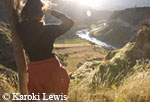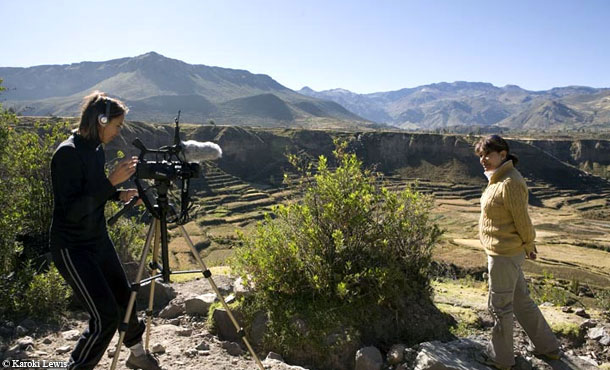Backstory - Beyond Machu Picchu

The light in the Andes is very sharp, and the colours vibrant. Both attributes make filming pleasurable. I also found locals willing to be interviewed on camera, which is no mean feat. Often people are too shy to speak to a foreigner or too anxious about the authorities to risk talking to a journalist. But it is such interviews – with farmers and subsistent villagers and market-stallholders – which I most value. Here are people rarely asked how they feel about a particular global or even local issue.
The toughest filming challenge for this feature was getting footage of condors on the wing. They rarely swoop or swerve, instead using thermals to glide, but even so it is hard to score perfect focus. I spent half a day in the Colca Canyon getting ten seconds of footage.
I would like to return to film the Inca Trail. The last time I walked the route to Machu Picchu was in the early ‘90s during the height of Shining Path terrorism and there was barely a tourist in sight. Much has changed since then. While I was in the area this time, I heard about environmental damage to the trail and poor working conditions for porters. Tourism has, of course, also helped improve the lives of some people in Aguas Calientes, Cusco and the region. Like with so many tourist destinations, here are the conflicting pressures and pleasures of increased footfall and increased revenue.





